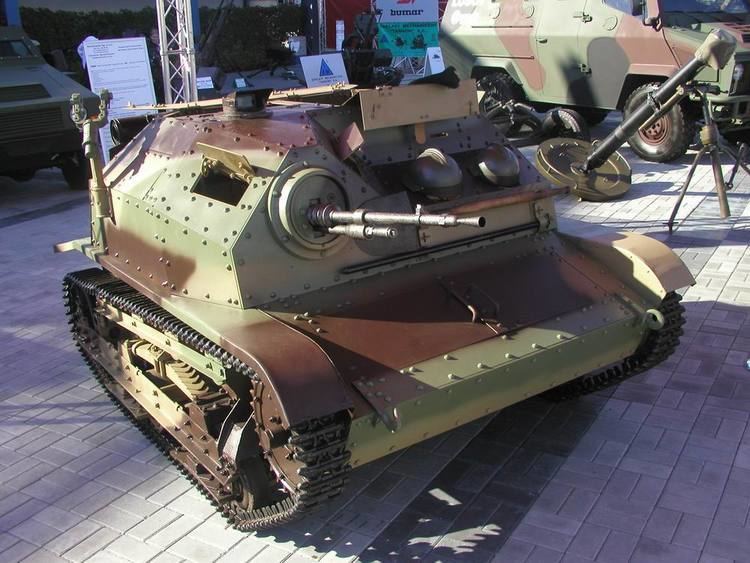Produced 1931 - 1939 Weight 2.43/2.6 tonnes | No. built 575 | |
 | ||
Manufacturer Fabryka Samochodów PZInż. | ||
The TK (TK-3) and TKS were Polish tankettes during the Second World War.
Contents
Design and development
The TK (also known as the TK-3) tankette was a Polish design produced from 1931 based on the chassis of the British Carden Loyd tankette, with an improved hull and more powerful engine, and armour up to 8 mm thick (10 mm on the TKS). In 1939, up-arming of the tankettes with Nkm wz.38 FK 20 mm machine guns began, but only 24 of these were completed before the outbreak of World War II.
On 6 November 1934 Estonia purchased 6 vehicles from Poland, with the contract deal worth over 180,000 krones. The deal also included one additional tracked-lorry, and a motorcycle was given free as a bonus. After the Soviet Union occupied Estonia, these vehicles were put into service with the Red Army.
Combat history
The 575 TK/TKS tankettes formed the bulk of the Polish armoured forces before the outbreak of war. They suffered heavy losses during the Invasion of Poland, often being the only armoured fighting vehicles available. Due to their light armament of a single machine gun, they stood no chance in combat against German tanks, except against the Panzer I, but their small size suited them for reconnaissance and infantry support. Only the handful of tankettes armed with 20 mm guns were effective against enemy tanks; in one instance on 18 September 1939 a 20 mm gunned TKS commanded by Podchorazy (Officer Candidate SFC) Roman Orlik destroyed three German Panzerkampfwagen 35(t) tanks.
After the conquest of Poland, captured tankettes were used by the German army in various support roles, mostly for training, security duties or as artillery tractors. Many captured tankettes were also used by the Luftwaffe for airfield security and snowplowing. Some were later sold to the military of the puppet state of Croatia.
Variants
Experimental models:
Users
Surviving TK-series tankettes
There are only two fully operational TKS tankettes and one TK-3 surviving. All of them were reconstructed from wrecks in the first decade of 21st century, using non-original parts.
The other survivors are not in working order.
